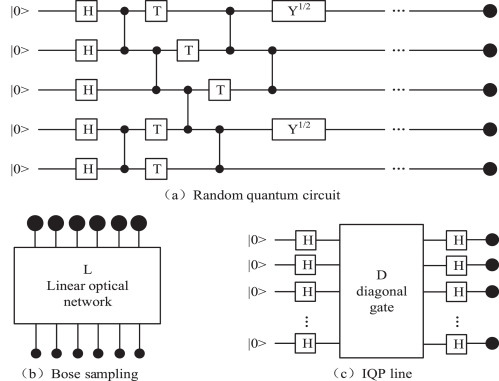
Quantum Innovation Converges with Neuromorphic Computing: NeuroSA Pioneers a New Frontier in Optimization
A groundbreaking computing system referred to as NeuroSA is set to revolutionize the approach to solving intricate optimization challenges, facilitated by an extraordinary fusion of neuromorphic architecture and quantum physics principles. Created by a collaborative team of researchers from multiple universities, led by Shantanu Chakrabartty, the Clifford W. Murphy Professor and vice dean for research at Washington University in St. Louis (WashU), NeuroSA signifies the dawn of a new age in computational intelligence.
Released in Nature Communications on March 31, 2025, NeuroSA presents a dependable and energy-efficient strategy for identifying mathematically optimal solutions to some of the most formidable issues in science, industry, and engineering — problems that have consistently perplexed conventional computers or neural networks that rely on machine learning techniques.
What Is NeuroSA?
NeuroSA, short for Neuromorphic Simulated Annealing, fundamentally operates as an optimizer: a system designed to pinpoint the most favorable solution amidst a vast array of candidates within a specified framework. However, in contrast to traditional neural networks commonly utilized in artificial intelligence — which can become entrapped in so-called local minima and settle for “adequate” answers — NeuroSA provides a substantial enhancement: a mathematical assurance that it will discover the global optimum, given sufficient time.
This advancement is made feasible through the use of Fowler-Nordheim (FN) annealers, components rooted in quantum tunneling, a phenomenon that permits particles to ‘tunnel through’ energy barriers instead of surmounting them. By employing these mechanisms in optimization tasks, NeuroSA can comprehensively investigate entire solution landscapes and steer clear of the pitfalls that hinder more traditional methodologies.
Benchmark-Breaking Performance
NeuroSA has demonstrated remarkable outcomes in standard industry evaluations. When faced with solving Maximum Cut and Maximum Independent Set problems—critical mathematical models relevant to practical applications in circuit design, social network analysis, and optimization of investment strategies—NeuroSA not only matched but frequently surpassed currently leading-edge techniques. In the realm of Maximum Independent Set challenges, it entirely exceeded existing performance standards, showcasing the system’s enhanced problem-solving ability.
What is particularly remarkable is that this level of performance is achieved without requiring extensive problem-specific adjustments, a common and time-intensive necessity for other optimization tools.
Neuromorphic Meets Quantum
Central to NeuroSA’s innovation is its hybrid framework that integrates neuromorphic computing with quantum principles. Neuromorphic systems replicate the architecture and operation of the human brain, utilizing energy-efficient spiking neuron models to execute computations in a massively parallel manner. By applying simulated annealing—an optimization strategy inspired by physical annealing processes in metallurgy—onto spiking neurons, the system achieves what researchers term a “functional isomorphism.” Essentially, it mirrors the sequential logic of simulated annealing but within a highly parallel, brain-like substrate.
This distinctive setup facilitates the use of FN-based quantum tunneling principles to substitute traditional randomness generators, resulting in a machine that is not only more efficient but also exhibits greater accuracy.
Real-World Applications in Motion
The potential applications of NeuroSA span a broad range of industries:
– Supply Chain Logistics: Optimizing delivery routes, warehouse management, and inventory distribution across global networks with millions of constraints and variables.
– Pharmaceutical Discovery: Accelerating the identification of optimal protein folding configurations or molecular interactions in drug development.
– Energy Systems: Real-time management of smart grid resources and setups.
– Electronic Design Automation (EDA): Improving circuitry design performance and chip layout for next-generation computing devices.
One notable benefit is NeuroSA’s capacity to produce high-quality solutions early in the optimization process. This ability enables companies to realize tangible benefits swiftly—even while the system progresses towards the global optimum.
Hardware and Energy Efficiency Benefits
In contrast to conventional quantum computing platforms—which necessitate cryogenic cooling and specialized materials—NeuroSA functions effectively on pre-existing neuromorphic hardware, such as the SpiNNaker2 platform developed by SpiNNcloud Systems.
SpiNNaker2 offers significantly reduced power consumption and enhanced parallelism compared to CPUs, making it particularly well-equipped for the types of extended, energy-efficient computations required by NeuroSA. This advantage positions the new system at a crucial intersection of both neuromorphic and quantum-inspired computing—two of the industry’s fastest-growing sectors for investment and R&D.
Constraints and Future Progress
Despite its advantages, NeuroSA still grapples with the fundamental challenge of scalability. For particularly complicated optimization issues, even this sophisticated system may demand considerable time, with computational needs often increasing exponentially with problem size.
However, this limitation is a commonality among nearly all general-purpose optimization methods. What distinguishes NeuroSA is its practical efficiency—the capability to approach the optimal answer swiftly, coupled with the confidence that it will ultimately reach the global optimum.
Collaboration and Resources
The NeuroSA initiative stemmed from collaborative efforts originating from the Telluride Neuromorphic Cognition Engineering workshop. Graduate student Zihao Chen from Washington University led the hands-on implementation as the primary author of the project.